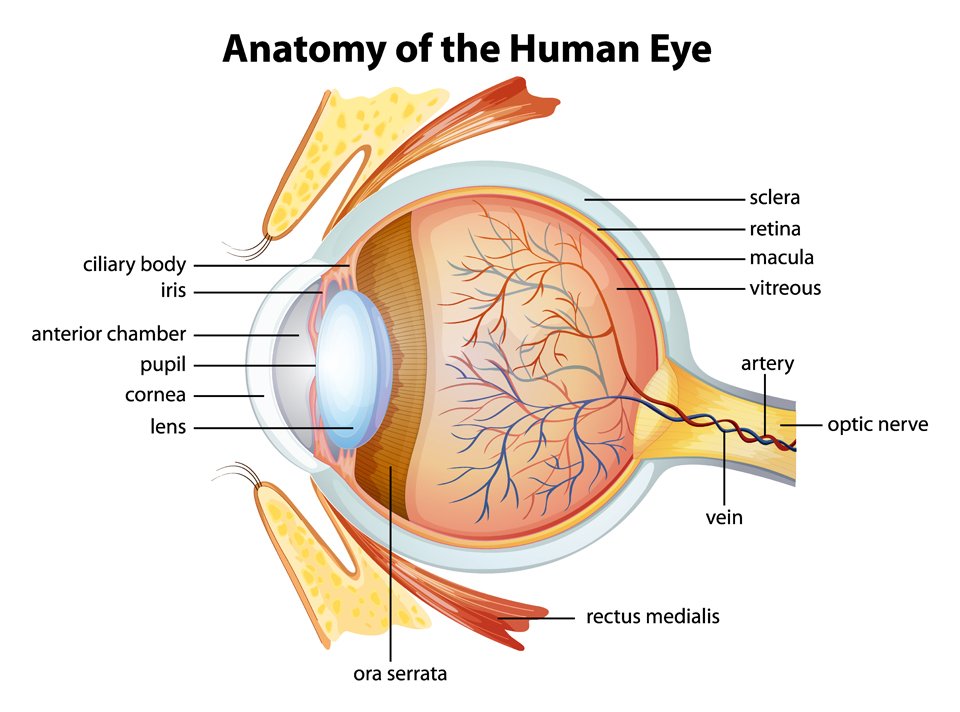
What to Do If You Have a Stroke in the Eye?
37-year-old Candy swiped her mobile phone before going to bed. Suddenly, her right eye went black and she couldn’t see anything. Candy needs to pay more attention and treatment, otherwise she may suffer from blindness or stroke in the future.
What exactly is a stroke in the eye? What is the connection with stroke? How to treat and prevent it?
What is Stroke in the eye?
The medical term for an eye stroke is a retinal artery occlusion (RAO). Eye stroke refers to the blockage of blood vessels in the retina, resulting in sudden loss of vision, blurred vision, or temporary loss of vision. The most common age for eye stroke is 50-70 years old, that is, high-risk groups who often suffer from diseases such as high blood pressure, high blood sugar, and high blood. lipids, and are prone to vascular obstruction. The prevalence rate of middle-aged and elderly people over 50 years old is 1%; However, due to the rejuvenation of the three highs in recent years, the age of onset of eye stroke has gradually dropped to 30-40 years old, and even young people in their 20s.
Eye Stroke Cause: Blood clots in the eye
The retina of the eye is located in the innermost layer of the eyeball wall, responsible for light-sensing and imaging, and is connected with two blood vessels, such as the central artery and the central vein. These two blood vessels form branches on the retina, providing the oxygen and nutrients required by the retina, and remove waste from blood circulation. Once a retinal artery or vein thrombus occurs, the retinal cells will die within a few hours due to the loss of oxygen and nutrients, causing the retina to lose its light-sensing and imaging functions, resulting in vision deteriorating or loss.
8 High-Risk Groups for Eye Stroke
Anyone with high risk factors for vascular occlusion has a higher chance of eye stroke:
1. Seniors over 50 years old
2. Three high (hypertension, hyperglycemia, hyperlipidemia) patients
3. Patients with cardiovascular disease
4. People with a family history of stroke
5. obese
6. Long-term smokers, excessive alcohol drinkers
7. Those who stay up late for a long time and have abnormal work and rest
8. Glaucoma patients: Due to high intraocular pressure, retinal blood vessels are more likely to be blocked.
There are two types of eye stroke
As mentioned earlier, there are two blood vessels connecting the retina, and these two blood vessels will form branches on the retina. If the blocked blood vessel is an artery, whether it is a central artery or a branch artery, it is called retinal artery occlusion; if it is Vein, which is retinal vein occlusion. If the blockage occurs in the central blood vessel, the symptoms are usually more serious than the blockage of the branch blood vessel, because it will directly affect the blood circulation of the whole retina.
Retinal Vein Occlusion:
- Occlusion of the central retinal vein and branch veins
- Occurs more often
- Causes blood to be unable to flow out after entering the retina through the artery, reducing the blood flow of the artery
- The injury is less severe and the prognosis is better, but the patient’s vision is usually difficult to restore to the original state.
Retinal Artery Occlusion:
- Occlusion of the central retinal artery and branch arteries
- Rarely occurs
- Arterial blockage can prevent blood from flowing into the retina, resulting in hypoxia and necrosis of retinal cells
- The more serious the injury, the closer the blockage is to the central artery, the more severe the visual impairment, and the worse the prognosis

Sudden loss of vision? Signs and symptoms of eye stroke
In the early stage of eye stroke, one eye of the patient may experience temporary blurred vision and darkness in front of the eyes, but after a few minutes, it returns to normal again; May happen repeatedly.
When an ocular stroke occurs, the patient will experience sudden, painless blurred vision, visual field defects or loss of vision in one eye, and will not improve over time; at this time, the patient needs to seek medical attention immediately. Once the retinal blood vessels are blocked for more than Within 90 minutes, it will cause irreversible damage to the retina, resulting in permanent vision loss and even blindness.
Pay attention to the stroke in the eye, be careful of the stroke in the brain
Although eye stroke does not cause cerebral apoplexy, it can be regarded as a precursor of cerebral apoplexy, because the source of blood vessels supplying human eyes and brain are both internal and external carotid arteries. If blood clots appear in the blood vessels of the eyes, it means that the blood vessels in the brain and neck may also be blocked. You need to undergo blood tests, neck ultrasound and other examinations immediately, and control the three highs, adjust your work, rest and diet to reduce the risk of blood clots. According to clinical statistics, if the eye is not properly taken care of after a stroke, the chance of stroke will increase by 30% within 3 years, and it will be higher than 70% within 5 years. Patients should not be careless.
Will the wind in the eye be okay? The sooner an eye stroke is treated, the better
After the doctor confirms the diagnosis of eye stroke, he will give the following treatment depending on the obstruction situation to rescue the ischemic and inflamed retinal tissue:
- Treatment for lowering intraocular pressure: including anterior chamber puncture, oral antihypertensive drugs or ocular hypotensive drops.
- Thrombolytic agent: Administer thrombolytic agent to reperfuse the blocked and ischemic area.
- Retinal laser therapy: reduce the impact and sequelae of eye apoplexy on vision.
- Anti-vascular endothelial growth factor: It is a new therapy, because retinal vascular occlusion often causes macular edema, and then leads to vision loss or blindness. This therapy improves macular edema by directly injecting drugs into the eyeball, and has a significant effect on restoring the vision of patients help.
- Newer intraocular long-acting steroids: often combined with anti-vascular endothelial growth factor, help reduce inflammation and speed up recovery.




